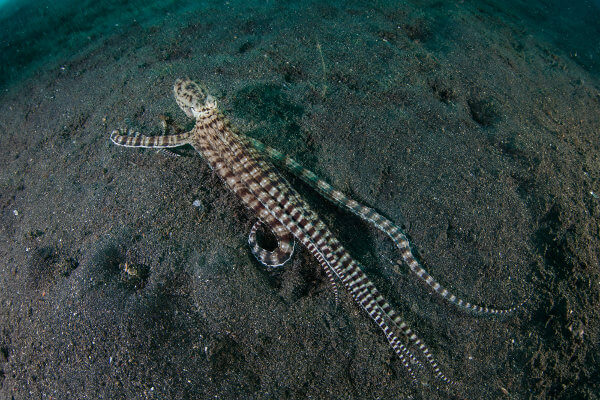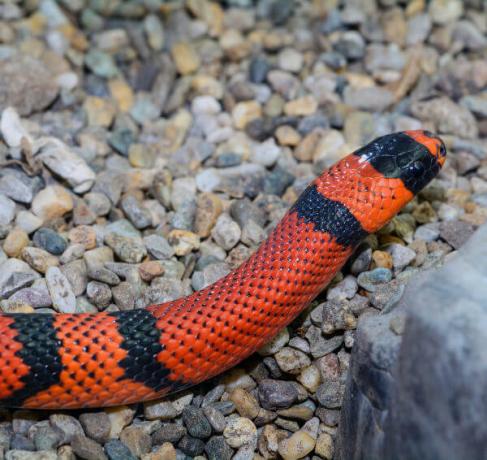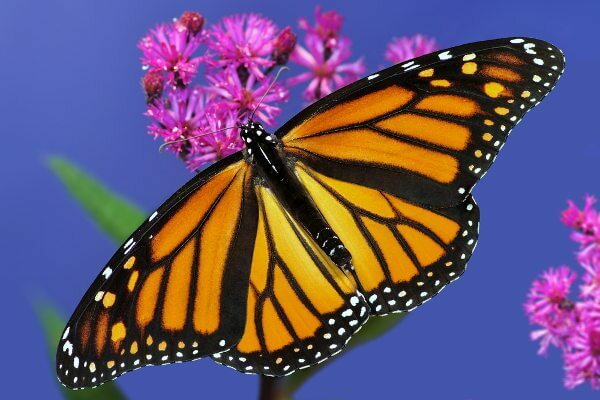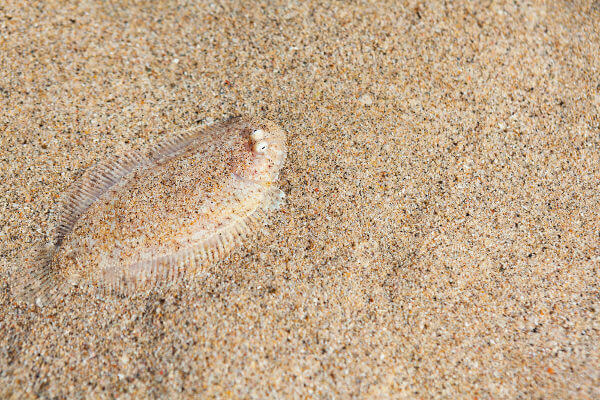O mimicry is a mechanism used by some species, in which one species is observed imitating another, this being physical or behavioral imitation. Mimicry is a technique used by different organisms and can be conferred in three ways: attack mimicry, in which the mimetic organism is the predator; defensive mimicry, in which the prey is mimetic to drive away its predator; it's the reproductive mimicry, which is performed by plants that resemble the females of their pollinators (see figure at the beginning of the text).
Know more: Chemical compounds in plant defense
→ Examples
An example of the mimicry used by the predator is the one performed by the octopus mimetic (Thaumoctopus mimicus). That animal can take the appearance of another species, in order to get closer to his prey. It also performs mimicry as form of defense imitating animals that chase away predators. Among the forms that mimetic octopus can take, we can highlight: sea-serpent, Manta ray, sole and crab.

The mimetic octopus can mimic the behavior as well as the shape of other animals.
Another well-known manifestation of mimicry occurs between the false coral and the true coral. In this case we observe that the false coral imitates the pattern of the true coral, and the two snakes are quite similar. This mimicry is an important defense mechanism, since the true coral is poisonous, unlike false coral.

False coral is similar to true coral, which is poisonous.
→ Types
There are different types of mimicry, however, we commonly see its classification into two basic types: o Batesian and Mullerian. Let's see more about these below:
-
Batesian mimicry: The most classic type, in which a species (non-harmful and can serve as food) mimics in another that causes damage or is not palatable. In this type of mimicry, the increased density of mimetic individuals is detrimental to predator learning. This is because if many mimetic species are in place, the predator will continue to feed on the species without understanding the warning signs.
An interesting example of Batesian mimicry occurs between the moth larva Hemeroplanes ornatus and the green parrot snake. The larva of this moth, when disturbed in any way, inflates its head and thorax so that it resembles the aforementioned snake. This drives away predators. In addition to looking like a snake, it also mimics its behavior by moving its head back and forth.
-
Mullerian mimicry: In this case, we observe that two species that are unpalatable (that is, that do not have a pleasant taste for predators) or that have other defense mechanisms are similar. In this type of mimicry, what is observed is that the learning from predators is benefited with the increase of mimetic species and also with the increase of the other species, as both cases allow to reinforce the association between its physical pattern and its defense mechanism.
An example of this mimicry occurs between the monarch butterfly (Danaus plexippus) and the viceroy butterfly (limenitis archippus). The latter has a shape and color similar to those present in the monarch, however, in this case, the sign is true, as both are harmful.

The monarch butterfly is an unpalatable butterfly.

The viceroy butterfly mimics the monarch butterfly.
Know more: Insects
→ Mimicry and camouflage
Many people believe that the mimicry and the camouflageare the same mechanism, however, are distinct methods. As highlighted throughout the text, mimicry concerns the imitation of a living being by another species. Camouflage, in turn, is a strong association between the living being and the environment where he lives.
Different animals perform camouflage. Some have, for example, fur, feathers and scales that resemble the environment in which they live. Others present cells calls from chromatophores, which allow the body color change of the animal according to the environment in which it lives. Here are some images that illustrate the camouflage.

Notice how the butterfly's color blends with the trunk.

Notice how the fish is barely noticeable in the sand.

Notice how the reptile merges with the tree.
Also access:Ecological niche and habitat
By Ma. Vanessa Sardinha dos Santos

